Discover Rock N Roll Archaeology
Rock N Roll Archaeology

 Rock N Roll Archaeology
Rock N Roll Archaeology
Author: Pantheon Media
Subscribed: 828Played: 11,001Subscribe
Share
© 2015-2025 Pantheon Media
Description
Rock N Roll Archaeology (RNRA) is more than a podcast; it’s an immersive, carefully researched and produced audio documentary.
RNRA explores the history of Rock Music, and then goes a step further. We contextualize Rock N Roll; we place it within the cultural, political, and technological landscapes of the late 20th and early 21st centuries.
With storytelling, commentary, and a dash of musicology, we explore how music, culture, and technology interact and affect each other—how they ARE each other.
57 Episodes
Reverse
Welcome back to the second half of our big chapter telling the big story of a big year in Rock. If you haven’t done so already, we highly recommend you listen to Episode 18 before you delve into this one!
We tell the story of 1969 by telling the story of four concerts: The Beatles on the Roof, The Rolling Stones in Hyde Park was the first part. Part Two will take us to the peak, to the apotheosis of Woodstock...and to the abyss at Altamont. And we’ll go to some other places in between too.
1969 is the year Rock N Roll goes global, and we’ll get into that a little, and set up later discussions of great topics like Rock behind the Iron Curtain and the growing influence of Reggae and World Beat.
Then we’ll take you to Woodstock, and call off the roster, with lots of great music and commentary.
The first mythical Rock tour--the Rolling Stones ‘69 tour of America, is up next. That will take us to the final show of the tour, on a dark December night in California, where everything that can go wrong, will go wrong, and the consequences will be tragic.
We close out with some thoughts on the year and on the decade we’ve just completed, and on what comes next.
www.rocknrollarchaeology.com
Learn more about your ad choices. Visit megaphone.fm/adchoices
The show opens December 27th, 1961, at the Cavern Club where Pete Best calls in sick, and the boys bring in Richard Starkey - Ringo Starr to the world - to sit in on drums, his first paid gig with the Beatles. It clicks musically; the band really swings with Ringo on drums.
Learn more about your ad choices. Visit megaphone.fm/adchoices
Arrival: we begin the show on February 7th, 1964, in the first-class cabin aboard Pan American Airlines Flight 101 from London to New York City. It’s a raucous, party atmosphere, but John Lennon, for a moment anyway, feels alone in a crowd.
A door opens, pandemonium ensues, and a new era arrives.
Some housekeeping, and we move on to the Soho District, West London, and lay some foundation for today’s story—and for future discussions. Then we pull back a bit, and look at some of the political, economic, and cultural forces at play in 1950s England.
We then move on to Liverpool, late 1950s, and meet John Lennon and Paul McCartney, before they was fab. Then we pull back once again, and talk about alchemy and catalysts—and about a shared bond of shared loss.
One catalyst comes in the form of a person: Paul’s school chum George Harrison, the baddest young guitar-slinger in Liverpool.
John, Paul and George settle in together in the spring of 1958, and begin a four-year apprenticeship that will take them from coffee-house skifflers to the “Toppermost of the Poppermost.”
Then it’s off to Hamburg, fall of 1960. The Beatles work hard and play hard, and learn the basics of being a professional Rock N Roll band. We briefly meet a sad-eyed bloke who plays drums—and plays them well—in a competing band on the circuit.
We will also meet two founding Beatles: Stu Sutcliffe and Pete Best, and tell some of Stu’s story, a story with a tragic ending.
At the end of the second tour, the Beatles become a four piece, and acquire their signature instruments. At the end of the third Hamburg tour, they come back to Liverpool as conquering heroes.
June of 1962, and John, Paul, and George stand on the brink.
Departure: there is one final move, one last step to take. And the Beatles already have someone in mind.
Learn more about your ad choices. Visit megaphone.fm/adchoices
Welcome to Rock N Roll Archaeology! This is a reboot of Episode One: The Precursors, originally released October 15, 2015. We updated and improved it some, and re-released it on November 4, 2020.
Show Notes and Playlist Here
We begin in Times Square, late summer of 1945. The war is over.
First up, the Baby Boom and a newly-discovered demographic, the white American teenager.
This new cohort is huge, with unprecedented economic clout. Young, restless and affluent, and they want to get beyond the timid, conformist popular culture of 1950s America.
“Race Records” (an outdated term for rhythm and blues records by African American musicians) become hugely popular with white teenagers. Drawn from the well of sorrow that is the Black American experience, this music has the edge and urgency--the authenticity--these kids are seeking.
We meet our first hero - the musical genius Ray Charles - and our first anti-hero, the frenetic, fatally flawed DJ Alan Freed.
We shine a light on two grassroots cultural movements that became important later: the Skiffle Craze in the United Kingdom and the Beat Poets of Urban America.
1954 is an inflection point. On the musical front, Bill Haley released the first million-selling Rock N Roll record: “Rock Around The Clock.”
That same year, big changes in the political landscape. The Brown v Board of Education decision; and Senator Joseph McCarthy was publically humiliated and discredited.
Freedom of Association and Freedom of Expression take a step forward. Paranoid politics and systemic racism are still very much with us in America, but in 1954 it got a little easier, became a little less risky, to be yourself and express yourself.
We head to the delivery room: Memphis Recording Service, where we meet the first Rock N Roll superstar, Elvis Presley, and tease Chapter Two.
Hosted and Produced by Christian Swain
Written By Richard Evans and Christian Swain
Sound Design by Jerry Danielsen
https://www.patreon.com/cw/RNRAP
Learn more about your ad choices. Visit megaphone.fm/adchoices
Progressive Rock reached its zenith during the early 1970s, a period often celebrated as the genre's golden age. This era of Prog Rock has inspired intense opinions—both positive and negative—that rival those of any other rock movement or genre throughout music history.
Fans of Progressive Rock are known for their passionate dedication.
On the flip side, critics, including renowned voices like Lester Bangs, Robert Christgau, and Robert Hilburn, were notoriously dismissive of Progressive Rock. Despite their often harsh criticisms, we believe that time has proven them wrong.
Our perspective has evolved, and we now view the best of 70s Progressive Rock as a genre with substantial depth and intellectual substance. The music from this era isn't just enjoyable; it’s some of the most significant work of the 20th century.
Not all Prog Rock from this period hit the mark—there were certainly moments of excessive self-indulgence. However, the Prog bands and songs that have stood the test of time are truly exceptional and worth celebrating.
Producer and Host: Christian Swain
Head Writer: Richard Evans
Sound Designer: Jerry Danielsen
RockNRollArchaeology.com
RNRA on Patreon
RNRA on TeePublic
Learn more about your ad choices. Visit megaphone.fm/adchoices
Episode Title: The Last Great Dream: Dennis McNally on the 1960s Counterculture, the Grateful Dead, and Its Lasting LegacyEpisode Summary:What if everything you thought you knew about the 1960s hippie movement and the Summer of Love was just scratching the surface? In this deep-dive conversation, acclaimed author and Grateful Dead historian Dennis McNally joins the show to discuss his monumental book, The Last Great Dream. We go beyond the clichés of flowers and tie-dye to uncover the intellectual, political, and artistic currents that fueled the San Francisco counterculture. McNally reveals how the dream of the 60s continues to shape our modern world in surprising ways—from the food we eat to the computers we use—and offers a profound look at its triumphs, its failures, and its unfulfilled promises.
Learn more about your ad choices. Visit megaphone.fm/adchoices
Glam rock was more than just a sound—it was a shift in how music, fashion, and identity intertwined.
We explore the rise of Glam in the early ‘70s, with David Bowie as its central figure. Through alter egos like Ziggy Stardust and the Thin White Duke, Bowie use theatricality, androgyny, and science fiction themes to push the boundaries of rock music and stardom.
But Glam wasn’t just Bowie. UK Artists like T. Rex and Slade, and Americans like Lou Reed and Alice Cooper each brought their own take, blending rock with elaborate visuals and a playful disregard for traditional norms.
Glam faded after a few short years, but its influence is lasting. Glam style and attitude reappear, over and over, in Rock Music.
Producer and Host: Christian Swain
Head Writer: Richard Evans
Sound Designer: Jerry Danielsen
Learn more about your ad choices. Visit megaphone.fm/adchoices
The Soul of the 1970s. First, Marvin Gaye kicked the door open with “What’s Going On,” and then Stevie Wonder barged in.
The Wonder Years spanned 1971 to 1976; when the transcendent, diverse talent of Stevie Wonder was in its fullest flower. That five-album span is one of the most successful and impactful creative runs in the history of recorded music.
Our podcast offers immersive storytelling, insightful commentary, and a stellar musical playlist. Join us as we delve deep into the lives and musical genius of these iconic Soul-Music luminaries.
https://open.spotify.com/playlist/7s4Vyw1FLb4XpJnANduFPs?si=14746e9dd53049b1
Learn more about your ad choices. Visit megaphone.fm/adchoices
We want the airwaves, baby! Chapter 23 of Rock N Roll Archaeology tunes into radio and radio culture in America and elsewhere. There was a brief moment in the 70s and early 80s where FM Rock Radio was something pretty special.So what was that like, and where have all the good times gone? Some storytelling in this one, but it’s a little heavier on the commentary…and of course we’re featuring some killer songs, because that’s how we roll.
“Begin the day with a friendly voice, a companion unobtrusive, Plays that song that’s so elusive”
For full show notes and to support Rock and Roll Archaeology visit www.rocknrollarchaeology.com.
Learn more about your ad choices. Visit megaphone.fm/adchoices
We start with a tragedy, then a cautionary tale of the world not ready for a band. We then find more positive inspiration from an artist who delivers a huge seller. We end with a legend.
Janis Joplin dies just before releasing her magnum opus, “Pearl.” A band called Fanny is ready to rock, but a culture poisoned by the patriarchy isn’t yet ready to accept them. Carole King makes Tapestry, a sincere, modest, and deeply personal album that hits huge and becomes a milestone for women. We complete the story with a profile of one of the giants of 20th Century Music, Joni Mitchell. We discuss her artistic and commercial peak in the early 70s with “Blue,” “For the Roses,” and “Court and Spark.” We admire all of these women for kicking down the door, and we celebrate the progress we’ve made since them, but there is still a long way to go.
Now for some general remarks about the research and writing.
To the best of our ability, we tried to center women in this chapter. We’ll leave it to the listener to decide how we did with that.
There’s a diversity of opinion about this, but we think it’s fair to say the second wave of feminism hits the crest during the period we are covering, and it is not at all a coincidence that women really start to make big and important contributions to Rock Music right around this time too.
Roe vs Wade was decided right around here, about fifty years ago. We are painfully aware of the US Supreme Court’s recent decision to overturn Roe, stripping many millions of American women of their fundamental human rights to bodily autonomy and medical privacy.
As we move forward with our chapters, we will document that half century of regressive backlash and how it got us here; it’s part of the story. Like we often say, Rock N Roll reflects back on, interacts with, and affects the larger society. And vice versa. In the late Sixties and early Seventies, it seemed like the progress would be permanent, and that more progress was on the way. Some of us were naive enough to believe that. We would do well now to remember the words of the anti slavery activist Frederick Douglass, way back in 1857:
This struggle may be a moral one, or it may be a physical one, and it may be both moral and physical, but it must be a struggle. Power concedes nothing without a demand. It never did and it never will.
Voice Talent
Richard Evans as L.A. County Coroner
Stephanie Pena as Alice Echols
Stephanie Meyers as the voice of Creem Magazine
Amanda Morck as Meredith Ochs
Christy Alexander Hallberg as the voice of the IMA mission statement
Carole King as Herself
Erin Alden as Tanya Pearson
Lynley Ehrlich as Carol Hanisch
Thessaly Lerner as Judy Kutulas
Holly Cantos as the voice of the New York Times
Online Resources
Rock’s Back Pages
Coroner's Report, archived at janisjoplin.net
ABC Nightly News Report, from October 4th, 1970
Deeper Digs in Rock: 'Rock N Roll Woman: The Fifty Fiercest Female Rockers' with Meredith Ochs
The Institute for the Musical Arts
1416 N. La Brea Ave, Hollywood
50 years ago, the Sylmar earthquake shook L.A., and nothing’s been the same since
Women of Rock Oral History Project
"That's the Way I've Always Heard It Should Be": Baby Boomers, 1970s Singer-Songwriters, and Romantic Relationships
Carol Hanisch The Personal is Political
New York Times “Albums as Mileposts in a Musical Century”
Deeper Digs in Rock: Reckless Daughter - A Portrait of Joni Mitchell
Jonimitchell.com
Joni Mitchell, Woman of Heart and Mind
Books
Joan Didion, “Slouching Towards Bethlehem”
Alice Echols: “Scars of Sweet Paradise”
Carole King: “Natural Woman”
Meredith Ochs: “Rock And Roll Woman: The Fifty Fiercest Women Rockers”
Sheila Weller: “Girls Like Us”
Jerry Wexler: “Rhythm and the Blues”
David Yaffe: “Reckless Daughter”
Documentaries and Films
Fanny: The Right to Rock
Learn more about your ad choices. Visit megaphone.fm/adchoices
The fuse was lit in 1966. Jeff Beck, Jimmy Page, John Paul Jones, and Keith Moon came together to record a proto-metal classic. After the session an offhand quip from Keith Moon sticks with Jimmy Page.
Then we meet The G; the imposing Peter Grant. Led Zeppelin’s fearsome tough-guy manager was a key reason why Zep dominated the rock landscape in the early 70s.
Well away from Swinging London, in the grimy industrial town of Birmingham, Black Sabbath comes together. We’ll also take a look at one of the greatest Jam Bands ever, Deep Purple.
Then on to probably the single saddest story in all of Rock History, the final days of Jimi Hendrix.
Jimi towers over all of it, the late, lamented godfather of Heavy Rock--Rock that centers around the guitar and celebrates blazing virtuosity on that instrument.
Gone but not forgotten: the Guitarmageddon explosion has reverberated way beyond the Seventies--all the way up to the present day.
Far more than any other movement or genre within Rock music...Metal, Heavy Rock, Jam Rock, pick your label...it’s got legs. It changes and grows, continues to reinvent itself, and it sticks around.
Still with us, still going strong, still powered by fans.
Voice Actors
Jemma Sconce as Sophia DeBoick
Bryan Reesman as Gauntlet.com
Tony MIchaelides as Martin Power
Jerry Danielsen as Oxford Dictionary
Courtney Anderson as Gregg Tate
Peter Ferioli as Stephen Hyden
Mistress Carrie as Consequence of Sound
Charles Cross as Charles Cross
Rich Price as David Fricke
Dave Sloan as Jon Landau
Full show notes at http://pantheonpodcasts.com/rock-n-roll-archaeology
Learn more about your ad choices. Visit megaphone.fm/adchoices
Rock N Roll as the First Draft Of History
We begin in the midwest college town of Kent, Ohio, in the late spring of 1970. We’ll meet three future rockers--students at Kent State University, barely out of their teens--who will be changed forever by what they witness. We’ll check in on Motown, where the fluffy pop “Sound of Young America” is still alive, but there's a big change coming, a movement towards a tougher, more topical sound. We’ll foreshadow that just a little--lots more to come in a later chapter. Rock N Roll is now Rock, and it is mainstreamed now, big and getting bigger. It set out to subvert the dominant paradigm, now it is the dominant paradigm. It can be downright paradoxical at times; defined by its own contradictions. We come back to the campus for the shattering events of May 4th. They inspire a unique musical response, something we really haven’t seen since then.
Written by Richard Evans and Christian Swain
Hosted and Produced by Christian Swain
Sound Design by Jerry Danielsen
Voice Actors
Holly Cantos as the voice of the Kent State Official History
Dr. Stephen Arnoff as the voice of Prof. Charles Reich
James O’Laughlin as the voice of Jimmy McDonaugh
Eric Nash as the voice of Kevin C. Smith
David Browne as the voice of David Browne
Songs
Randy Newman: “Burn On” from Sail Away, 1972
James Gang: “Funk 48” from Yer’ Album, 1969
The Stooges: “1970” from Fun House, 1970
Rare Earth: “Hey Big Brother” single released in 1970
Graham Nash: “Chicago” from Songs for Beginners, 1971
Edwin Starr: “War” from War & Peace, 1970
Eric Burdon and War: “Spill The Wine” from Eric Burdon Declares War, 1970
Frank Zappa and The Mothers: “Nanook Rubs It” from Apostrophe, 1974
John Lennon and the Plastic Ono: “Working Class Hero” from Plastic Ono Band, 1970
Jackson 5: “I Want You Back” Single released in 1969
Marvin Gaye: “Inner City Blues” from What’s Goin’ On, 1971
War: “Slippin’ Into Darkness” from All Day Music, 1971
CSN&Y: “Carry On” from Deja Vu, 1970
Neil Young & Crazy Horse: “Come On Baby Let’s Go Downtown” from Tonight’s the Night, 1974
Neil Young: ”The Needle And The Damage Done” from Harvest, 1972
Elton John: “Burn Down The Mission” from Tumbleweed Connection, 1970
Ten Years After: “I’d Love To Change The World” from A Space In Time, 1970
CSN&Y: “Find The Cost Of Freedom” single released in 1970
CSN&Y: “Suite: Judy Blue Eyes” from Four Way Street, 1971
CSN&Y: “Ohio” single released in 1970
Led Zeppelin: “What Is And What Should Never Be” from Led Zeppelin II, 1969
Books
David Browne: Crosby, Stills, Nash & Young
Bob Burroughs: Days of Rage
Robert Giles: When Truth Mattered
Todd Gitlin: The Sixties: Years of Hope, Days of Rage
Chrissie Hynde: Reckless: My Life as a Pretender
Jimmy McDonough: Shakey: Neil Young’s Biography
Rick Perlstein: Nixonland
Charles Reich: The Greening of America
Neil Sheehan: A Bright Shining Lie
Kevin C. Smith: Recombo DNA
Hunter S. Thompson: Fear and Loathing in Las Vegas
Online Sources
The Cuyahoga River
James Gang on Tour
Port Huron Statement
Jerry Casale at Kent State
Kent State University Official History
More Resources on the The Kent State Massacre
Assassination of Fred Hampton
Assassination of Fred Hampton--Gov’t Docs
Podcasts
WTF With Marc Maron: Episode 942, interview with Joe Walsh
Deeper Digs in Rock With Christian Swain: Interview with David Browne
Films and Documentaries
The Murder of Fred Hampton, Directed by Howard Alk, 1971
This show is part of Pantheon Podcasts.
@PantheonPods
Listen in HD only at www.rocknrollarchaeology.com
Learn more about your ad choices. Visit megaphone.fm/adchoices
This episode is dedicated with love to the memory of our dear friend Dennis Gordon. Dennis was the big booming voice on our show “bumpers” that would begin and end each chapter of Rock N Roll Archaeology. Thank you Dennis, we miss you. May the Four Winds blow you safely home.
Welcome back to the second half of our big chapter telling the big story of a big year in Rock. If you haven’t done so already, we highly recommend you listen to Episode 18 before you delve into this one!
We tell the story of 1969 by telling the story of four concerts: The Beatles on the Roof, The Rolling Stones in Hyde Park was the first part. Part Two will take us to the peak, to the apotheosis of Woodstock...and to the abyss at Altamont. And we’ll go to some other places in between too.
1969 is the year Rock N Roll goes global, and we’ll get into that a little, and set up later discussions of great topics like Rock behind the Iron Curtain and the growing influence of Reggae and World Beat.
Then we’ll take you to Woodstock, and call off the roster, with lots of great music and commentary.
The first mythical Rock tour--the Rolling Stones ‘69 tour of America, is up next. That will take us to the final show of the tour, on a dark December night in California, where everything that can go wrong, will go wrong, and the consequences will be tragic.
We close out with some thoughts on the year and on the decade we’ve just completed, and on what comes next.
This show is part of Pantheon Podcasts.
@PantheonPods
Listen in HD only at www.rocknrollarchaeology.com
Learn more about your ad choices. Visit megaphone.fm/adchoices
We’re putting down a marker with this episode, and the follow-up: the highest highs and the lowest lows of the entire Rock Era occurred in 1969. It’s a year so big, we had to cut it in two, in order to serve it up properly.
We start in January, with The Beatles on The Roof, a 42-minute outdoor concert that definitely warmed up the neighborhood of Mayfair, London, England. Then we catch up with their friends and rivals, The Rolling Stones.
The Stones broke out HUGE in 68 and 69, the beginning of an incredible five-year run: from Beggars Banquet on through to Exile On Main Street. Peak Stones, the sweet spot for the World’s Greatest Rock N Roll Band.
Brian Jones is out, Mick Taylor is in. We talk about how that happened, and how it impacted the Stones’ sound and attitude. Another influence starts seeping in: American Country Music, thanks to Keith’s new best buddy, Gram Parsons.
Brian’s tragic--and still unexplained--demise changes the Hyde Park Concert from a coming-out party into a memorial service. Emotion and conviction carry the day, and Hyde Park sets a very high and hopeful bar; it’s an early example of How To Successfully Pull Off A Really Big Concert.
During that “Moon-Crazy Summer” of 1969, NASA pulls off something really big. It’s the single greatest feat--so far--of human exploration: The Apollo 11 mission to the moon and back. We look at the moon landing through the Rock N Roll lens; we’ll talk about space travel, science fiction, and fantasy...in books, film, television, and most of all, in Rock Music.
Then David Bowie, with his lifelong knack for being ahead of his time, said take your protein pills and put your helmet on.
And we did.
And in just a short time we got used to it, became a little jaded about it.
That comes later. Here and now in the summer of 1969; stardust, golden, billion year old carbon...got to get ourselves back to the garden.
We’ll open Part Two at Yasgur’s Farm in upstate New York, and we’ll light a candle in the rain.
Head over to Pantheon Podcasts for full show notes.
Learn more about your ad choices. Visit megaphone.fm/adchoices
Chapter 17 of Rock N Roll Archaeology is bookended by a couple of Simon & Garfunkel albums: “Bookends” from the spring of 1968; and “Bridge Over Troubled Water” from January of 1970.
Our story takes place mostly in New York City: a city big enough to spawn two very different, very talented--and very influential--artists: Paul Simon and Lou Reed.
We skip work on a cold January afternoon to catch a movie: Mike Nichols’ “The Graduate.” It’s a generation milestone of a film, and Simon & Garfunkel’s music is a big part of that; what’s more, we argue, it’s a different kind of soundtrack, something new in film and popular culture.
We meet Tom Wilson, the first African-American staff producer at Columbia Records. Tom oversaw the first two Simon & Garfunkel albums. We follow him for a little while and he leads us to...Lou Reed and the Velvet Underground.
We get to know Lou and the Velvets, and the scene from which they sprang: Andy Warhol’s Factory. We meet a Factory hang-around, an angry young woman with good reasons to be angry, but she takes it way too far, with tragic consequences.
And we’ll meet the first Punk Rock band: The MC5, and the revolutionary political milieu they occupied. Wayne Kramer of the MC5 has some things to say about that, and about a fateful MC5 gig at the Fillmore East.
Finally, we’ll meet one of our favorite artists ever, who came from the same scene as the MC5: Iggy Pop. We say “Amen” to Iggy Pop.
We wrap it back around to Simon & Garfunkel, and their take on the anger and disappointment, on the turmoil of the late 1960s. An offer of comfort and healing is the first big Pop hit of the 1970s.
Listen to episodes 1-16 of Rock N Roll Archaeology and all our other podcasts at www.pantheonpodcasts.com
Learn more about your ad choices. Visit megaphone.fm/adchoices
We start our tale of Paradise Lost in Buena Vista Park, San Francisco, in the fall of 1967. Hippie, the Devoted Son of Mass Media, is dead, and the San Francisco Diggers are conducting the funeral.
From the funky streets of the Haight we head east a couple miles to the Fillmore West, and meet a complicated man, concert promoter Bill Graham. It was during these early years in San Francisco that Bill created the rock concert experience.
Then a brief trip to Texas, where Janis Joplin cleans up and then heads back; to San Francisco to find her family. We get to know Janis a little better, and talk about her early work with Big Brother and the Holding Company--and what happened when Janis left Big Brother.
We’ll spend a little more time on the Big Picture. Politically, culturally, in pretty much every way, 1968 was a pivotal year, in America and around the world.
Then across the Bay, to the lands that lie East of Eden. We’ll meet two very different acts, that interestingly enough, have similar stories: Sly and the Family Stone, and Creedence Clearwater Revival.
We close it out with a short meditation on the aftermath of the Summer of Love. We still dream it and dance to it.
Learn more about your ad choices. Visit megaphone.fm/adchoices
An impressionistic look at the interplay of Rock N Roll and Culture in Los Angeles during the latter half of the 1960s. There are familiar elements: storytelling, critical discussion and commentary, and lots of Rock N Roll attitude. But this one is different from most of our previous RNRAP offerings.
Learn more about your ad choices. Visit megaphone.fm/adchoices
We open in Manila, in the Republic of the Philippines, July 3rd, 1966. The second stop of the Far East leg of the Beatles’ 1966 tour starts out weird and ominous, and gets worse from there. By the time the tour sputters to a halt—late August in San Francisco—the boys are almighty sick of it.
Learn more about your ad choices. Visit megaphone.fm/adchoices
We open at Waldo Point Marina in Sausalito, California, just north of San Francisco.
Otis Redding takes a break from the road on Bill Graham’s houseboat, and comes up with a signature song.
Learn more about your ad choices. Visit megaphone.fm/adchoices
Jimi Hendrix's astonishing, supernatural talent was forged in poverty and neglect as he grew up in Seattle. We talk about that, and about the night Elvis came to town. After a short stint in the Army comes to a humiliating end, Jimi takes it on the road and spends the next four years paying his dues as a sideman.
Learn more about your ad choices. Visit megaphone.fm/adchoices







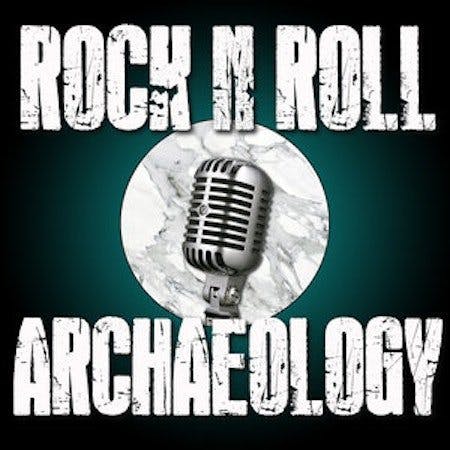

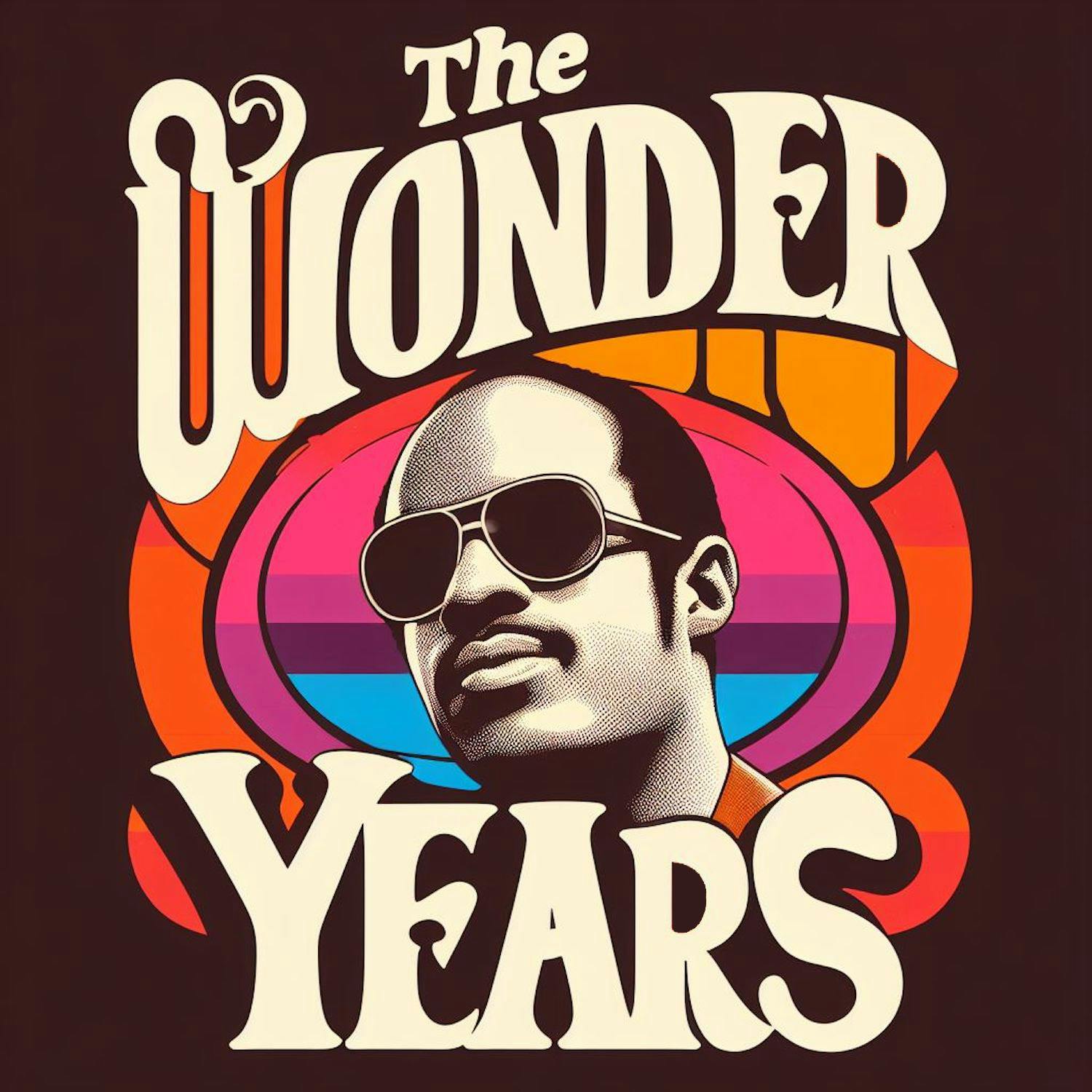
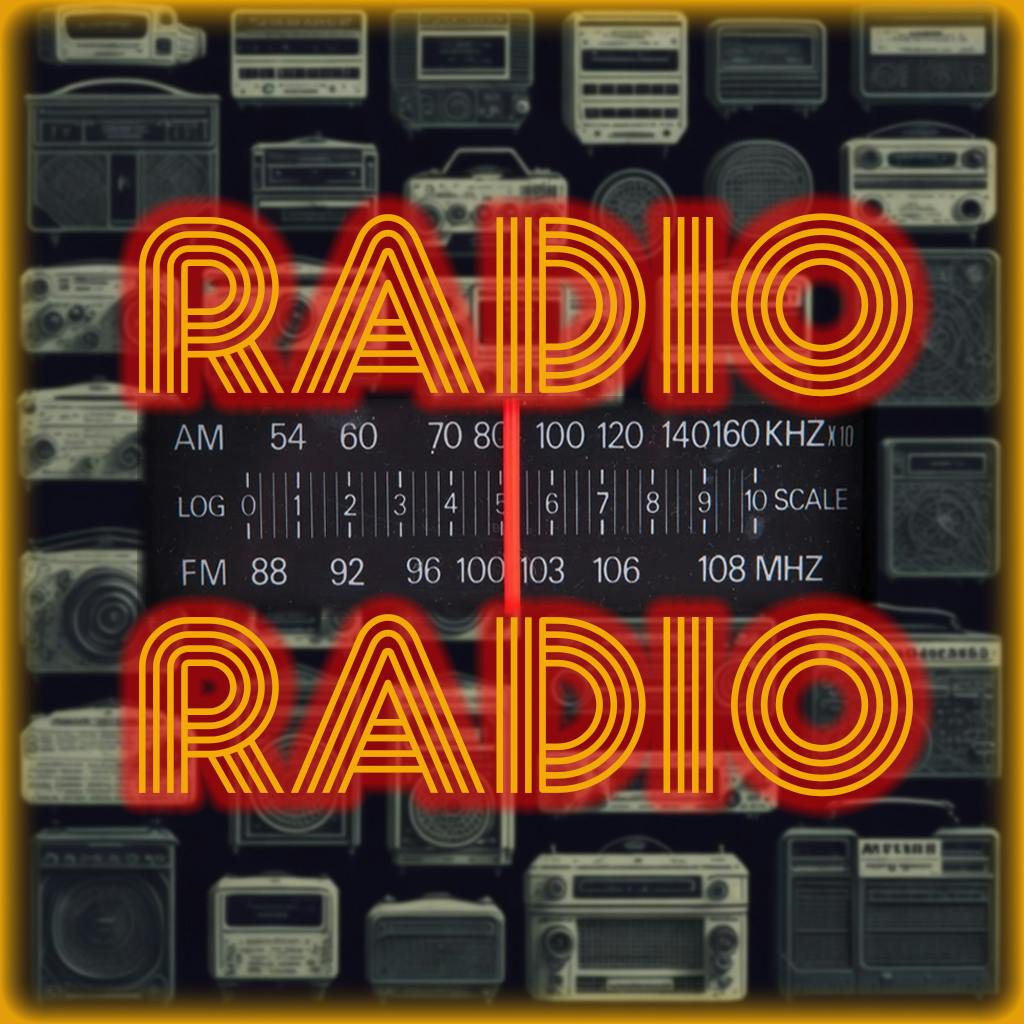
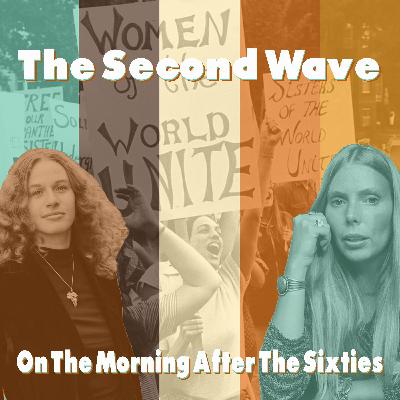



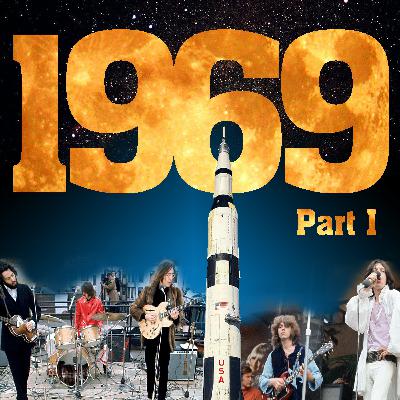
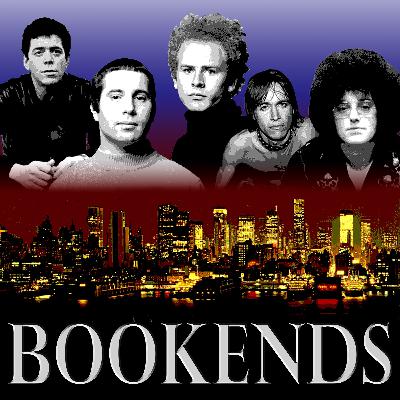
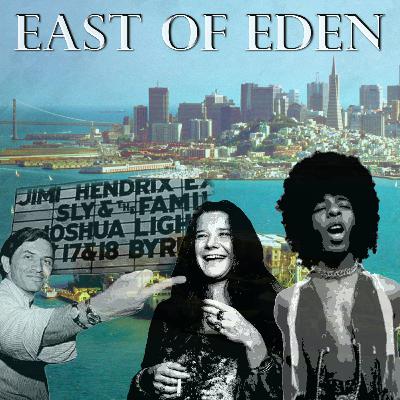
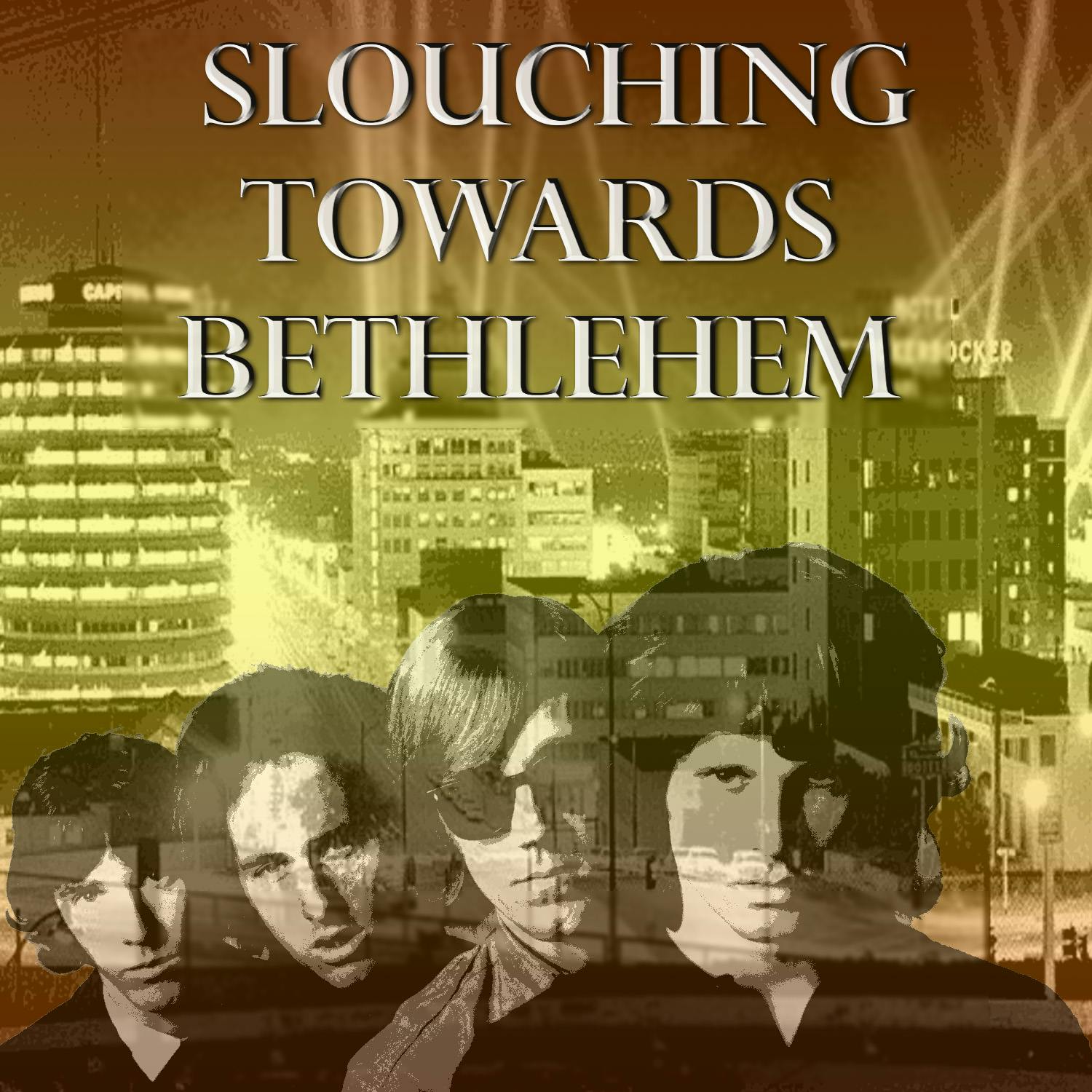

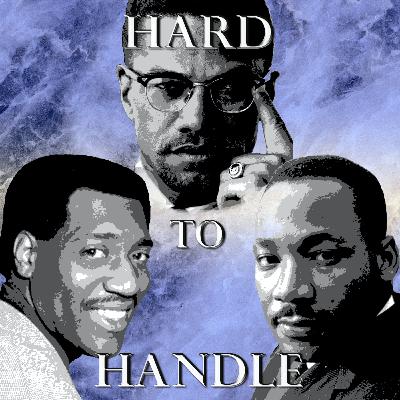




After 5mins of waffle and no actual content I gave up.